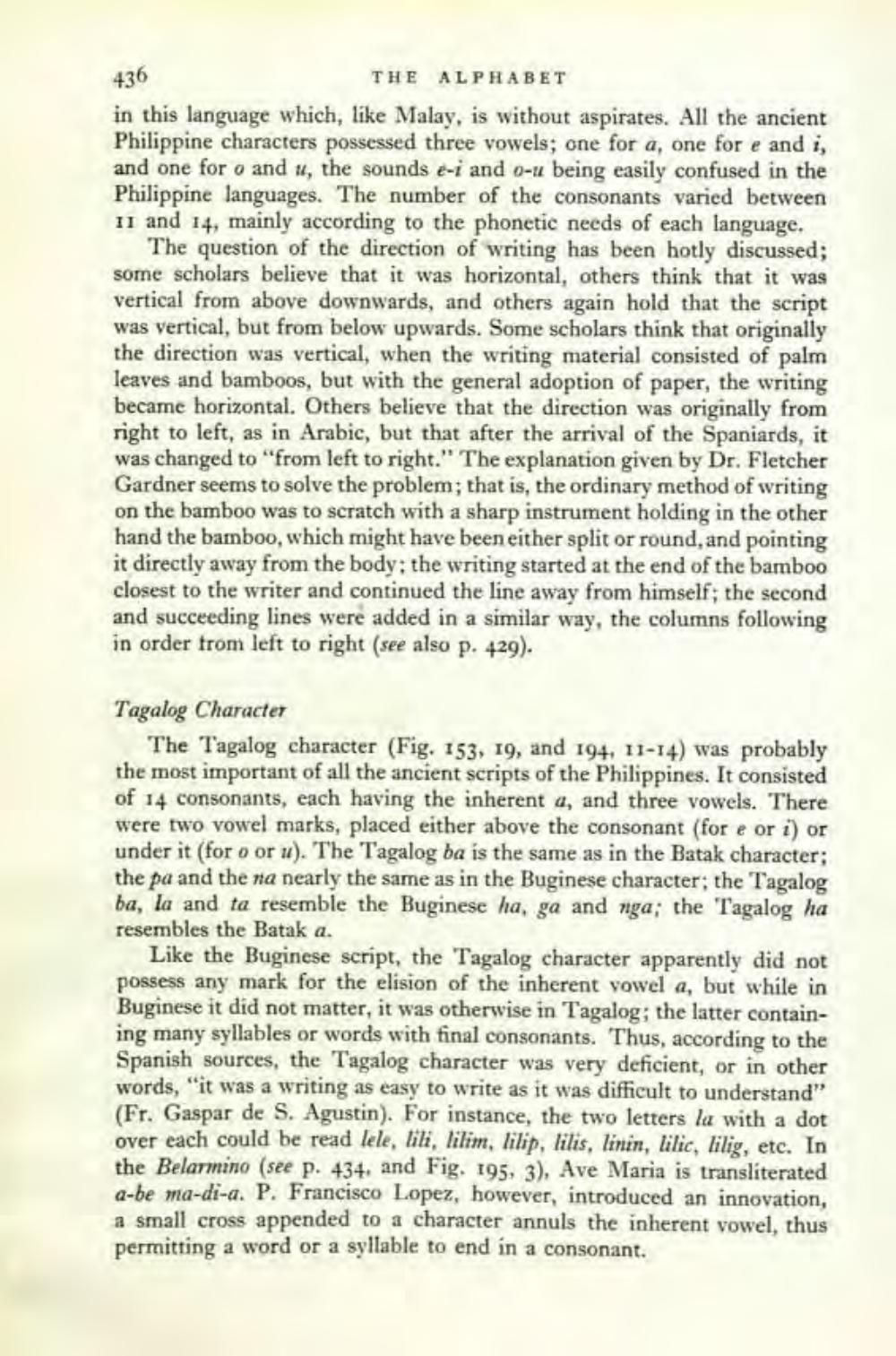________________
436
THE ALPHABET
in this language which, like Malay, is without aspirates. All the ancient Philippine characters possessed three vowels; one for a, one for e and i, and one for o and u, the sounds e-i and o-u being easily confused in the Philippine languages. The number of the consonants varied between 11 and 14, mainly according to the phonetic needs of each language.
The question of the direction of writing has been hotly discussed; some scholars believe that it was horizontal, others think that it was vertical from above downwards, and others again hold that the script was vertical, but from below upwards. Some scholars think that originally the direction was vertical, when the writing material consisted of palm leaves and bamboos, but with the general adoption of paper, the writing became horizontal. Others believe that the direction was originally from right to left, as in Arabic, but that after the arrival of the Spaniards, it was changed to "from left to right." The explanation given by Dr. Fletcher Gardner seems to solve the problem; that is, the ordinary method of writing on the bamboo was to scratch with a sharp instrument holding in the other hand the bamboo, which might have been either split or round, and pointing it directly away from the body; the writing started at the end of the bamboo closest to the writer and continued the line away from himself; the second and succeeding lines were added in a similar way, the columns following in order from left to right (see also p. 429).
Tagalog Character
The Tagalog character (Fig. 153, 19, and 194, 11-14) was probably the most important of all the ancient scripts of the Philippines. It consisted of 14 consonants, each having the inherent a, and three vowels. There were two vowel marks, placed either above the consonant (for e or i) or under it (for o or u). The Tagalog ba is the same as in the Batak character; the pa and the na nearly the same as in the Buginese character; the Tagalog ba, la and ta resemble the Buginese ha, ga and nga; the Tagalog ha resembles the Batak a.
Like the Buginese script, the Tagalog character apparently did not possess any mark for the elision of the inherent vowel a, but while in Buginese it did not matter, it was otherwise in Tagalog; the latter containing many syllables or words with final consonants. Thus, according to the Spanish sources, the Tagalog character was very deficient, or in other words, "it was a writing as easy to write as it was difficult to understand" (Fr. Gaspar de S. Agustin). For instance, the two letters la with a dot over each could be read lele, lili, lilim, lilip, lilis, linin, lilic, lilig, etc. In the Belarmino (see p. 434, and Fig. 195, 3), Ave Maria is transliterated a-be ma-di-a. P. Francisco Lopez, however, introduced an innovation, a small cross appended to a character annuls the inherent vowel, thus permitting a word or a syllable to end in a consonant.




